2019 Rd.10 RALLY DEUTSCHLAND
WRC 2019 ROUND 10 RALLY DEUTSCHLAND
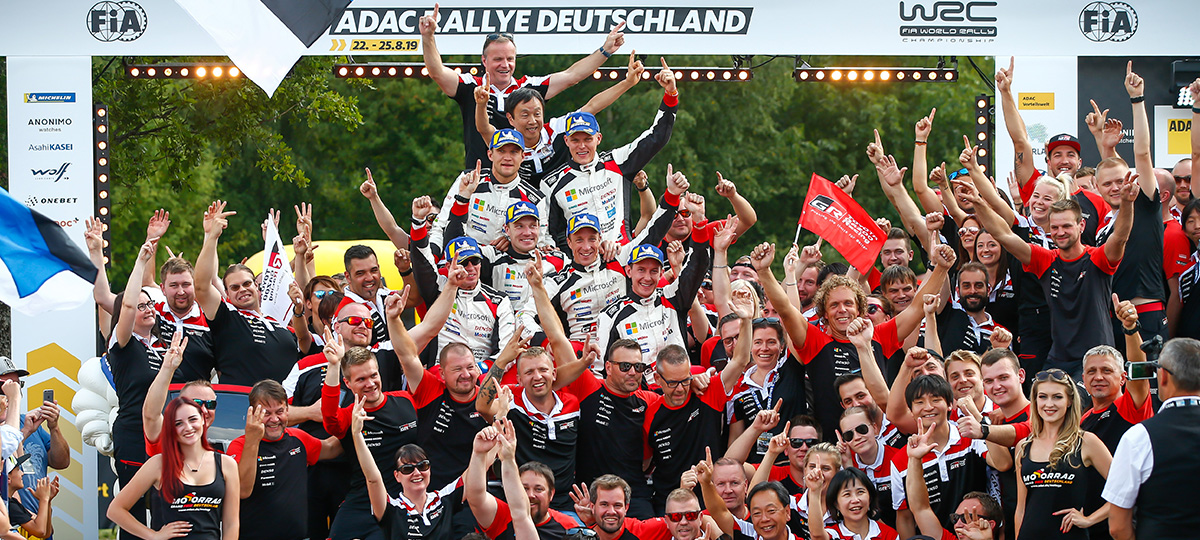
SUMMARY REPORT
At Rallye Deutschland, Round 10 of the FIA World Rally Championship (FIA), the TOYOTA GAZOO Racing WRT achieved its first 1-2-3 finish since its return to the WRC. Ott Tänak took victory, with Kris Meeke in second, and Jari-Matti Latvala in third. Before Germany, the team had seen two of its drivers standing on the podium; however, this was the first time that its drivers had occupied all three podium places. When Tänak completed the final stage, securing rally victory and confirming the team’s clean sweep of the podium, cheers and applause erupted from the team’s area of the service park. The members hugged each other and exchanged handshakes like never before, as they shared in the joy of a truly special victory.
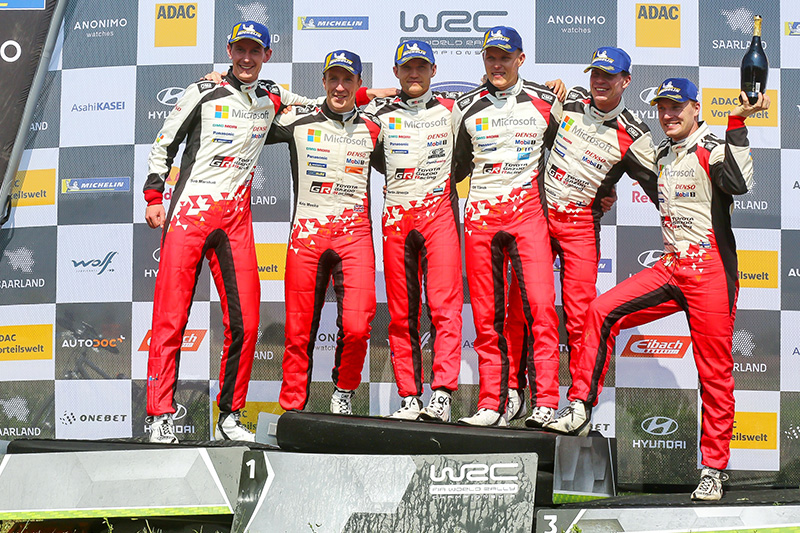
The previous tarmac event had been Round 4, Tour de Corse, which took place in March. The team had suffered a crushing defeat, and everyone was hugely disappointed. Tänak had been the best placed of the TOYOTA GAZOO Racing WRT drivers, finishing in 6th overall; Meeke had finished 9th, and Latvala 10th. It was one of the team’s worst results of the season. Yet, the Yaris WRC had not lacked speed. Of the Tour de Corse’s 14 Special Stages, the team’s drivers had been fastest on six of them. Despite this strong pace, they had slipped down the standings due to punctures, and these punctures had two separate causes: either, the tires had been damaged after striking stones or other sharp objects; or, the wheels had fallen into divots in the road, or been affected by the difference in height between the road itself and the shoulder, causing the rim of the wheel to bend, break, or suffer other forms of damage. Of these two causes—tire damage and wheel damage—the team focused most on wheel damage.
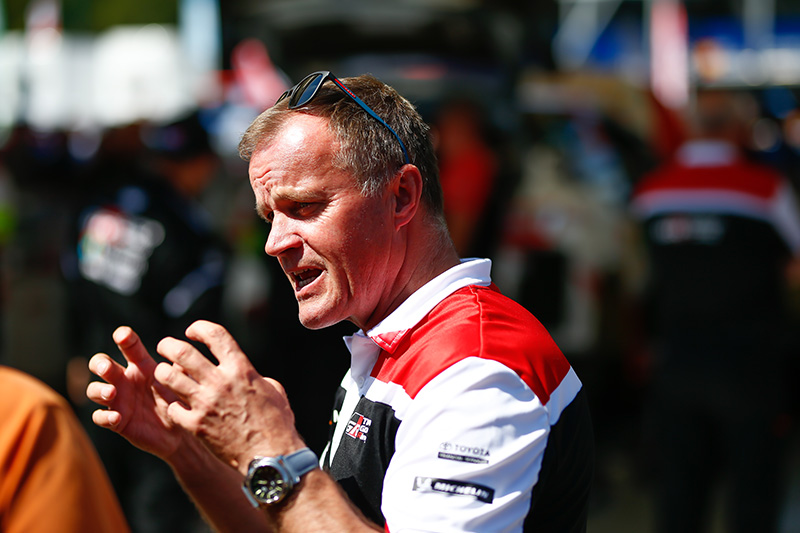
Generally speaking, tarmac rallies result in fewer shocks from the road surface than gravel rallies. All teams prioritize light weight in their tarmac wheel designs, since lowering unsprung mass leads to significant increases in driving performance. While teams of course give sufficient consideration to sturdiness and durability as well, it is extremely difficult to strike the optimal balance. Having endured wheel damage on several occasions at Tour de Corse, the TOYOTA GAZOO Racing WRT turned for help to Toyota Motorsport GmbH (TMG) in Germany, which possesses a variety of measuring apparatus. Together, they made a thorough investigation not only of the team’s tarmac wheels, but also of the balance between strength, durability and clearance of the suspension parts; changes were then made to the design of the wheels. The road surfaces at Rallye Deutschland, which was the next tarmac rally on the calendar, were set to be even rougher than the paved roads of Corsica; it was therefore absolutely critical that the team arrived at the rally with stronger wheels and suspension parts. Although Rallye Deutschland was still five months away, the fact that the team would also need to carry out testing meant that time was of the essence. The team therefore ensured it was fully focused on design changes.
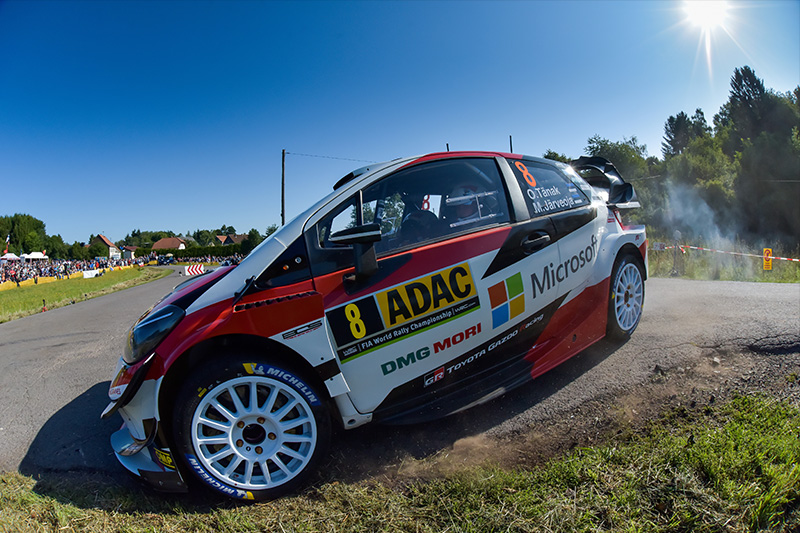
At this year’s Rallye Deutschland, the roads were in poor condition even during the recces, and the drivers sensed increased risks. In particular, the infamous Panzerplatte and Arena Panzerplatte stages, which take place inside the Baumholder military training ground, were in even worse condition than usual, in part due to the direction of travel being the reverse of most years. The Panzerplatte roads were hardened not with asphalt but with concrete; they had degraded over the years, and sharp fragments had broken off and now rolled across the surface of the roads. It would be almost impossible to avoid all these fragments, and so there was every likelihood that the tires and wheels would see some damage.
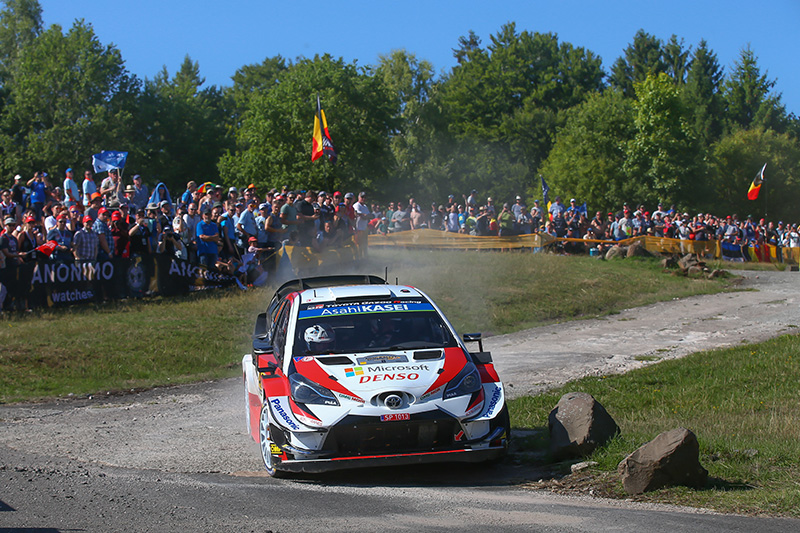
However, it turned out that these treacherous Panzerplatte stages were the deciding factor in the team’s 1-2-3 finish. Tänak had been in the lead up until that point, but his rival in second place was also setting a superb pace—it was an extremely close-run battle between them. Yet, on the first Panzerplatte stage, the driver in second place—who was a rival for both the rally and the overall championship—suffered a puncture and dropped down the standings. As a result, Tänak significantly extended his lead, and Meeke and Latvala rose to second and third respectively. At this point, the gap between Latvala in third and the driver in fourth was a mere 0.5 seconds, and it was by no means certain that all three TOYOTA GAZOO Racing WRT drivers would finish on the podium. However, on the second Panzerplatte stage, the fourth-placed driver also punctured. Free from pressure, Latvala was a giant stride closer to a top-three finish.
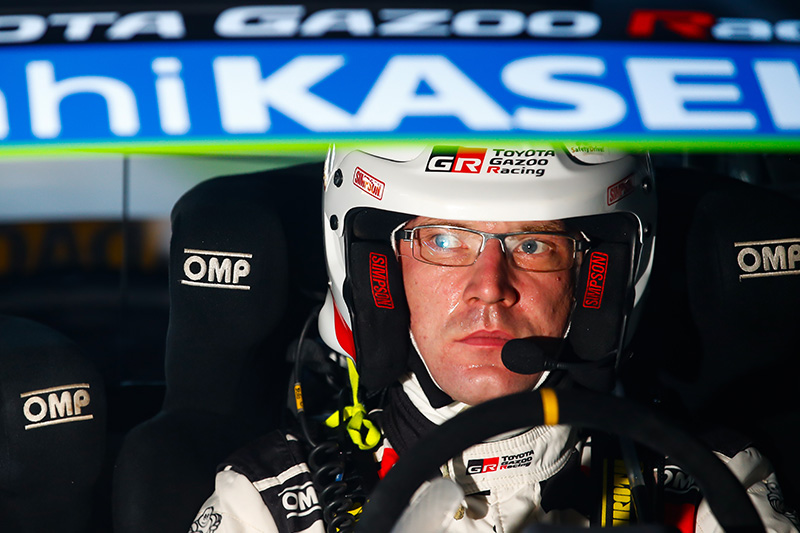
It might be said that the rough roads of Panzerplatte went some way to confirming the team’s 1-2-3 finish. At the end of a fierce series of time attacks, the rims of the newly designed wheels had bent a little, but the damage was not severe and the tires had not punctured. If the team had used the same wheels as at Tour de Corse, there is a strong possibility that they would have punctured. In the end, none of the three Yaris WRCs punctured over the course of the rally, and the cars reliably maintained their speed to the very end. The steady improvements to the wheels and suspension parts had contributed to the team’s clean sweep of the podium.
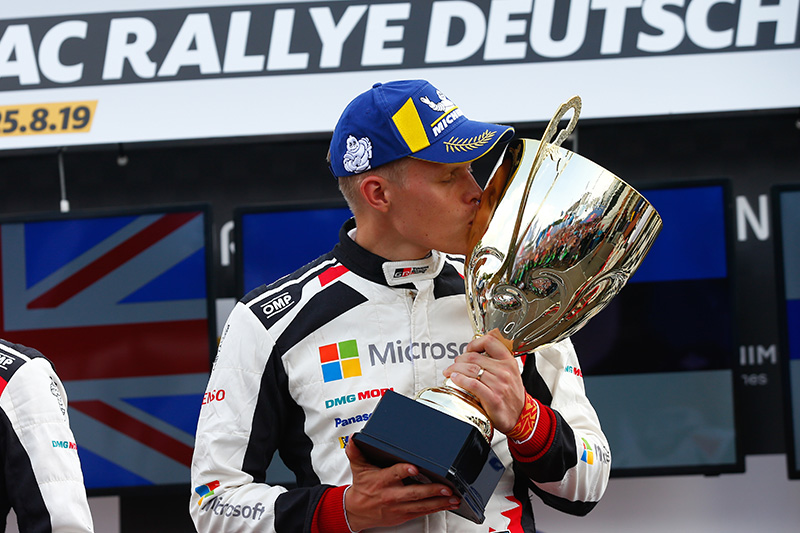
Deserving of even greater praise, however, are the drivers themselves. Although Tänak started Rallye Deutschland as the winner for the past two years, there were times in the early stages of the rally when his input and the behavior of the car were not fully aligned. Nevertheless, the Estonian made careful adjustments and managed to retain his rally lead. In addition to his outright speed, Tänak’s responsiveness was key to securing his third Rallye Deutschland victory in succession. Meeke, meanwhile, had been fighting among the leaders over the last few rallies, but he had failed to score any meaningful results due to crashes caused by driver errors. In Germany, however, he completed the difficult Rallye Deutschland with outstanding race management, and secured his first podium finish since joining the TOYOTA GAZOO Racing WRT.
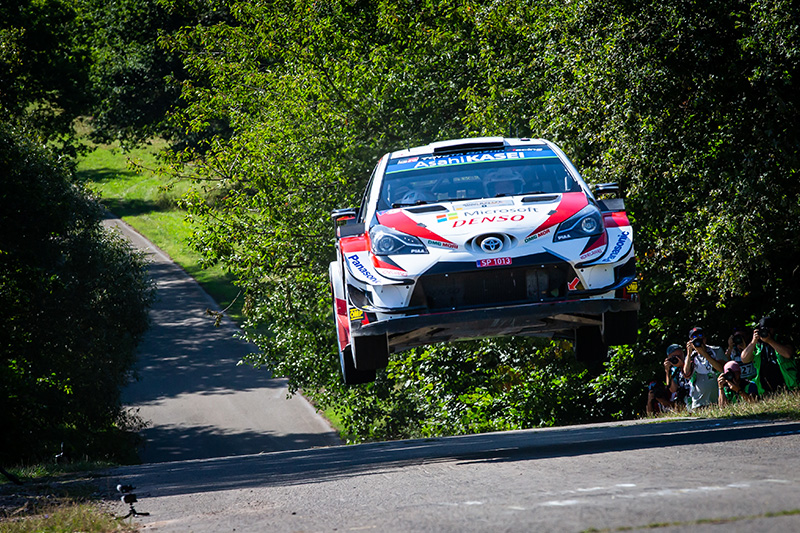
Meeke’s speed on both gravel and tarmac was apparent immediately after he joined the team. However, minor errors frequently led to punctures or to going out of bounds, and he let podium finishes slip through his grasp on numerous occasions. At Rallye Deutschland, the team suggested driving more passively and taking as few risks as possible. Since Meeke possessed superb natural speed, he would have every chance of fighting for the podium even if he eased off the pace slightly. To this end, the team held multiple meetings with Meeke before the start of the rally, and all parties agreed on taking a different approach to Rallye Deutschland.
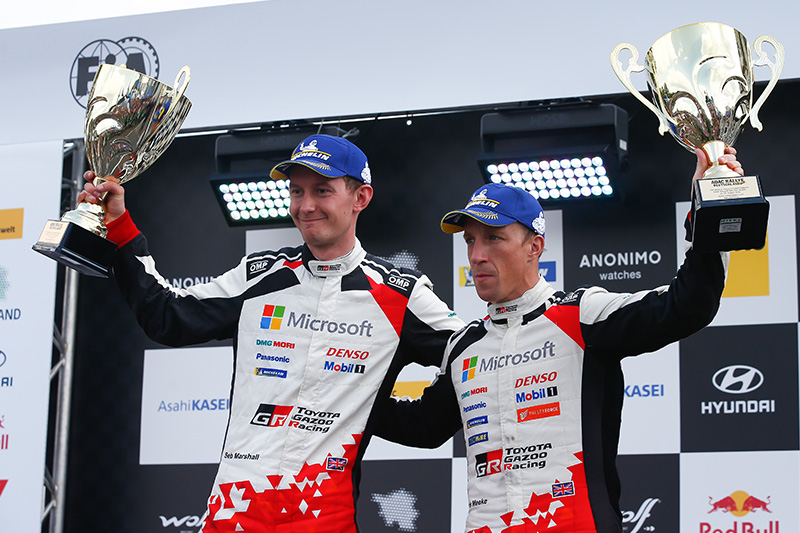
For a driver, driving slower is something that inspires even greater fear than driving at the limit. It requires great courage to hold back the sensation that “I can drive even faster.” Yet Meeke bravely continued to control his speed, and he was comfortably able to maintain fourth position overall. Indeed, as a consequence of his error-free driving, he was able to achieve an outstanding second-place finish. Having struck a fine balance between natural speed and dependable driving, Meeke had finally recorded the sort of result his performances deserved.
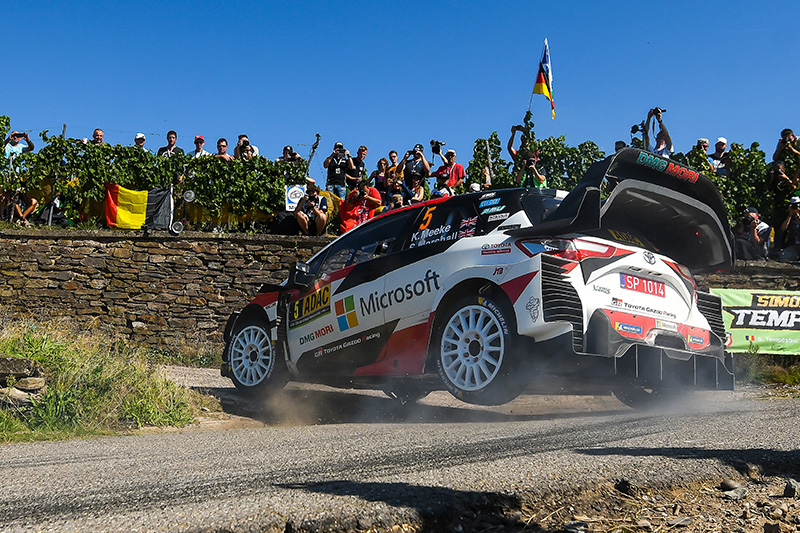
Latvala had stood on the podium for the first time this season at the previous event, Rally Finland; here in Germany, he followed up that success with a second podium in a row. Recording the fastest times on two Special Stages, Latvala clearly had speed. But during the rally, he was concerned with trying to find ways to improve his driving—and particularly his braking—on tarmac. Team Principal Tommi Mäkinen sensed this slight agitation and he made a phonecall to Latvala, timing it to fall between stages, reassuring him: “There’s no need to get frustrated. If you relax, then you will be fine.” Thanks to Mäkinen’s emotional support, Latvala was able to focus on his driving, and secured a second successive third-place finish.
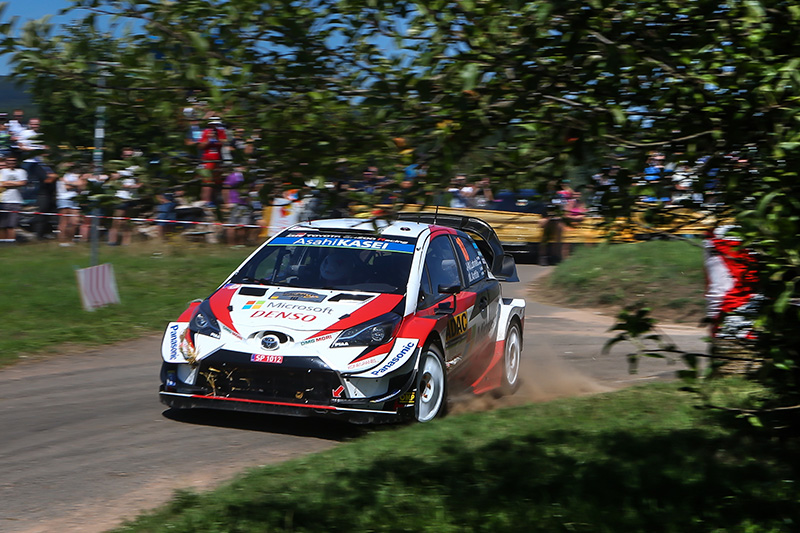
At Rallye Deutschland, Takamoto Katsuta, a member of TOYOTA GAZOO Racing Rally Challenge Program, participated for the first time in a top-category rally in the Yaris WRC. In fact, this was Katsuta’s first appearance at Rallye Deutschland, and also the first time he had taken the wheel of a World Rally car in a tarmac rally. The team had prepared such difficult conditions for their driver in order to enable him to gain experience for the future. There is a huge difference in speed and responsiveness between the Yaris WRC and the R5 car that Katsuta usually drives; there is also a need to make significant changes to his pacenotes. The sooner he can gain a first-hand understanding of this, the sooner he will develop a store of experience and knowledge to draw upon. It was with this in mind that the team set Katsuta the task of completing all stages of Rallye Deutschland at all costs. For his part, Katsuta suppressed his desire to drive as fast as possible and, instead, adopted a steady approach to completing all the stages. There was a significant gap in times to the team’s regular drivers, but finishing tenth in his first top-category rally was a fine result. Yet the experience he gained over the four days of the rally was of even greater significance than his result, and this enabled him to further improve his skills as a driver.
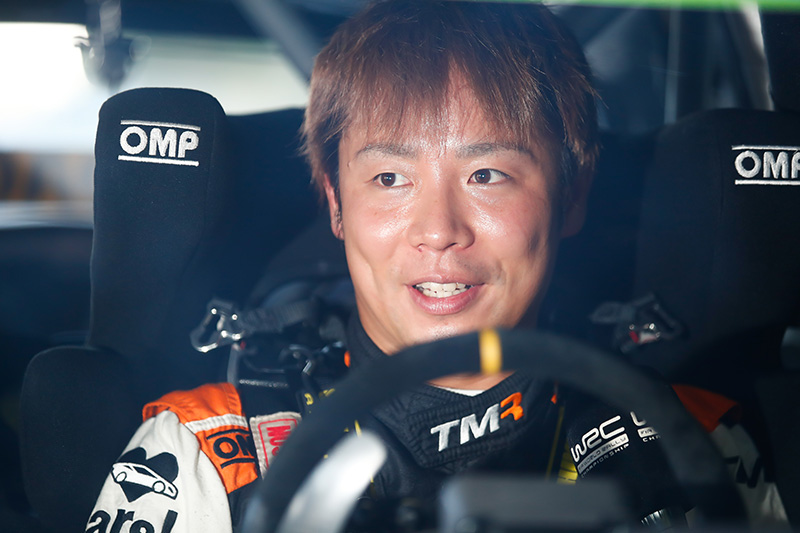
Katsuta’s next challenge in the Yaris WRC will be Round 13, Rally de España, in October. Spain is a mixed-surface rally—combining both tarmac and gravel surfaces—and there is little doubt Katsuta will demonstrate even greater confidence than in Germany.
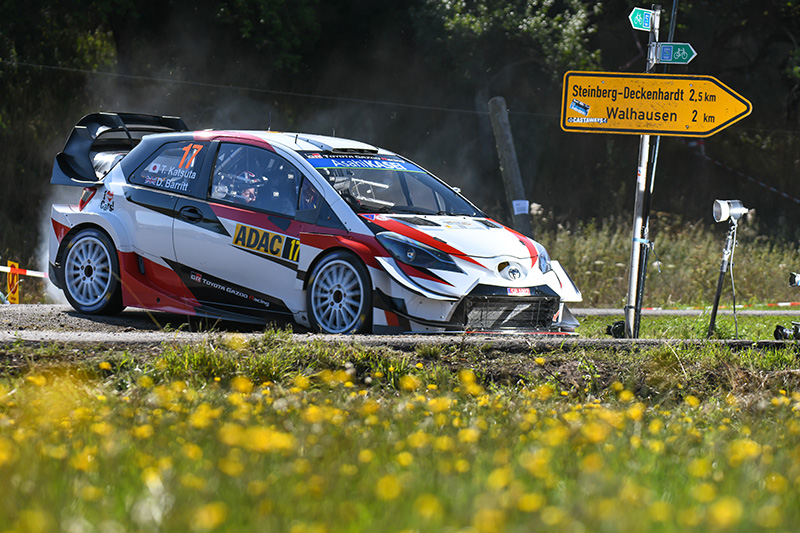
| Pos | Driver | Co-Driver | Vehicle | Time | |
|---|---|---|---|---|---|
| 1 | Ott Tänak | Martin Järveoja | Toyota Yaris WRC | 3h15m29.8s | |
| 2 | Kris Meeke | Seb Marshall | Toyota Yaris WRC | +20.8s | |
| 3 | Jari-Matti Latvala | Miikka Anttila | Toyota Yaris WRC | +36.0s | |
| 4 | Thierry Neuville | Nicolas Gilsoul | Hyundai i20 Coupe WRC | +58.5s | |
| 5 | Dani Sordo | Carlos del Barrio | Hyundai i20 Coupe WRC | +1m16.6s | |
| 6 | Andreas Mikkelsen | Anders Jaeger-Amland | Hyundai i20 Coupe WRC | +1m46.2s | |
| 7 | Sébastien Ogier | Julien Ingrassia | Citroën C3 WRC | +1m56.3s | |
| 8 | Esapekka Lappi | Janne Ferm | Citroën C3 WRC | +2m02.2s | |
| 9 | Gus Greensmith | Elliott Edmondson | Ford Fiesta WRC | +6m22.2s | |
| 10 | Takamoto Katsuta | Daniel Barritt | Toyota Yaris WRC | +8m19.2s |
- RELATED TOPICS
-
-
TOYOTA GAZOO Racing World Rally Team
launches 2019 challenge at the Autosport International showThe 2019 FIA World Rally Championship season has been launched today in front of thousands of motorsport fans at the Autosport International show in Birmingham, England. TOYOTA GAZOO Racing World Rally Team is in attendance with its manufacturers’ championship-winning Yaris WRC car and its full squad of drivers and co-drivers. -
WRC 2019 ROUND 10 RALLY DEUTSCHLAND Gallery
-